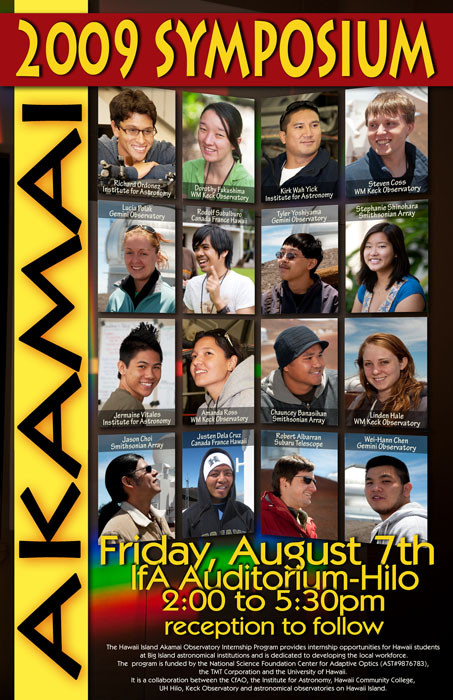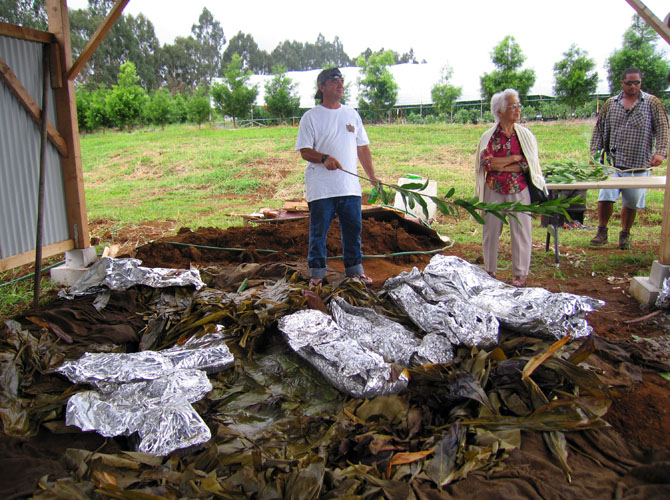When I called photojournalist Catherine Bauknight to talk about her new documentary Hawaii A Voice for Sovereignty, she was sitting in her Pasadena home where she could see the flames of
California’s Station Fire burn the closest ridge of the mountains a
mere couple miles away.
She tells a very different story of the land in her Hawai‘i-based documentary, which plays at Hilo’s Palace Theater tomorrow (Saturday, September 5, 2009) at 7 p.m., and Sunday at 2:30 p.m.
Richard was interviewed for and appears in the movie. He told me he was going to go look for his plastic nose and bushy eyebrows so he could go see the movie this weekend but stay anonymous. I’d love to see that.
From Catherine Bauknight’s website:
Hawaii A Voice for Sovereignty, is a documentary about the native Hawaiian’s journey to sustain their culture, spirituality, and connection to the land. This modern epic documentary, filmed over four years, contains rare interviews with Native Hawaiians in their homes, at sacred sites, in mountains and the rain forests. Along with the voices of these “people of the land”, Professor Haunani-Kay Trask, Senator J. Kalani English, Grammy nominee Willie K and other Hawaiian leaders, take us into rarely seen ancient lifestyles where spirituality, culture, and care for the land form a sacred bond between humankind and the natural
world. They reveal their quest to secure their Hawaiian rights as the host culture, and their economic, social, and ecological future. By bridging their ancient knowledge with modern technologies such as wind, solar, and wave renewable energy and agricultural land systems they move towards their goal of sustainability.
Here’s the film’s trailer.
Catherine is a seasoned photojournalist whose work has appeared in Time, Newsweek and People magazines, as well as in the New York Times, USA Today and Rolling Stone. She was one of five international journalists who covered the Tiananmen Square massacre.
She says Hawai‘i was someplace she came to relax, but after awhile she started looking around. “I started trying to figure out why the Hawaiians weren’t visible in their own environment,” she says, “and that led to this four-year documentary.”
She says she started asking questions and went from person to person getting recommendations on people to speak with who were knowledgeable about the Hawaiian culture. “They all told me, You cannot discuss the culture without discussing the relationship between the land and the people and the spiritualism and the sovereignty we are seeking.”
She also kept hearing about the need for Hawaiians to have their land and live sustainable lives, and then she heard about Richard.
“I asked Woody Vaspra, who is part of the Sundance ceremonies, if he knew of anyone who was living off the land and making a living off it and also including the Hawaiian people,” she says. “He suggested Richard, and when I spoke to Richard I realized he was exactly what I was looking for – that he is going back to the land and working on becoming sustainable, and also working toward using renewable resources. It was perfect.”
(“I have no idea how we fit into the story line,” says Richard. “I just gave my standard explanation of what we do at the farm.”)
Catherine calls the film an “oral history of Native Hawaiians.”
“These are the kupunas, the scholars, people who are grassroots,” she says. “It’s a combination of Hawaiians from all walks of life, and one of the most interesting things is that their message is the same. No matter what their background, from the most grassroots to the most highly educated. The message about the Hawaiian future, the land and spirituality is the same.
“And it’s the story of the Hawaiian people all the way back to the takeover,” she says, “in their own voice – but not presented with anger, it’s presented as facts. And it leads up to the renaissance of the Hawaiian people with hope and unity.”
She says they’ve sent information to the schools here and she especially hopes people will bring kids to see this story. “I’ve been told that children as young as 7 years old have sat down and watched this film from beginning to end, and it’s 84 minutes.”
It sounds like, in addition to the oral histories by native Hawaiians, there’s a lot to catch a child’s attention. “There’s hula,” she says, “and an ancient, very spiritual style of drumming and nose flute by Willie K. He doesn’t really do that publicly, but he did it in the rainforest especially for this film. He also does this amazing live rendition of ‘Spirits in the Wind.’”
Other musicians appear in the documentary, such as Lono from Molokai, George Kahomoku, Cyril Pahinui, Richard Ho‘opi‘i and
Makana. Catherine says the film’s soundtrack will be available on CD in a couple weeks. Watch for information about that in about a week at her website.
On Wednesday the film became eligible to be nominated for an Academy Award, and so it will open at the Coliseum Cinemas in Manhattan on September 15th, and the Laemmle Theater in Hollywood on September 23rd.
And then the film will travel and screen across the Pacific islands, following the route early Polynesians took on their voyage to become Hawaiians until it gets back to New Zealand.
Now Catherine says she is looking for business sponsors, who will have their logo on the film “from now until eternity.” She says there is just a little more than a week left to sign up sponsors, and interested parties can contact her here.
Palace Theater Tickets are $7 general, $6 for seniors and students, and $5 for Friends of the Palace. Call 934-7010 for more information.



